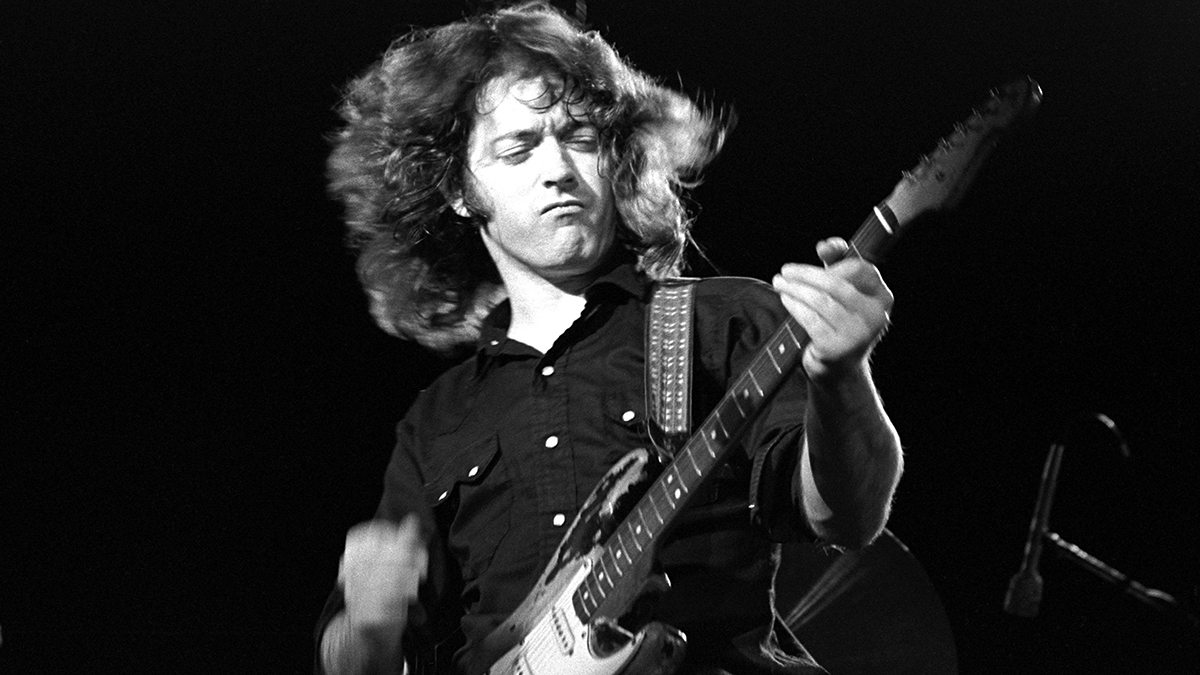
When it was confirmed this week that Rory Gallagher’s famous 1961 Fender Stratocaster will remain in his native Ireland - after being sold at auction for £889,400 - nobody was happier than Joe Bonamassa.
The American guitarist is playing three shows in the Irish city of Cork in July 2025, billed as Rory Gallagher Celebration starring Joe Bonamassa, in which he will be performing Rory’s classic material.
And after it was revealed that Rory’s iconic Strat had been purchased by Live Nation Gaiety Ltd, with the intention of donating it to the National Museum of Ireland, Bonamassa commented: “The best news I have heard all year. Bless them for keeping this guitar in Ireland. Congratulations to the Gallagher family for such an incredible auction. I know it was a heavy and emotional day.”
It is fitting that Bonamassa’s tribute shows are being staged in Cork, which was one of three cities in Ireland where Rory’s performances were recorded for the live album that many consider to be his masterpiece: Irish Tour ’74.
The other two locations where the album was recorded were Dublin and Belfast. And at a time when Northern Ireland was embroiled in The Troubles, it was hugely significant that Rory played in Belfast, when few if any major stars would risk it.
In 1974, an eye-witness report from Melody Maker writer Roy Hollingworth stated: “Belfast got a rock ’n’ roll concert on New Year’s Day in the City’s notorious Ulster Hall. Heading the bill was Rory Gallagher. It was the first public rock concert there since early last summer. The show was sold out weeks before. Sources close to the underground promised the IRA would 'leave it alone.’ Two thousand people were overjoyed as Gallagher took the stage, just 24 hours after the city had witnessed its biggest bomb blast during a night of at least 10 explosions.”
Hollingworth described the concert as a life-affirming experience.
“I’ve never seen anything quite so wonderful, so stirring, so uplifting, so joyous as when Gallagher and the band walked on stage. The whole place erupted, they all stood and they cheered and they yelled, and screamed, and they put their arms up, and they embraced. Then as one unit they put their arms into the air and gave peace signs. It all meant something, it meant more than just rock n’ roll, it was something bigger, something more valid than just that.”
Rory himself had this to say. “I see no reason for not playing Belfast. Kids still live here.”
He downplayed the significance of the location. “Gigs are A, B, and C on a sheet, Belfast may be a B. I saw no reason to think it any different than from A or C.”
But he did acknowledge that this show was of huge importance to the young people of Belfast. “Once it got over the feeling that they were thanking me for coming - once they’d got over that, they were into just the music,” he said. “Then it was darned marvellous. They’re wonderful kids you know.”
It was on stage that Rory Gallagher made his reputation, and Irish Tour ’74 captured him at his peak, backed by Gerry McAvoy on bass, Rod De’Ath on drums and Lou Martin on keyboards.
Irish Tour ’74 includes a titanic, 11-minute version of Walk On Hot Coals, a swinging Tattoo’d Lady, a masterful interpretation of Muddy Waters’ I Wonder Who and a stunning version of Rory’s greatest blues number, A Million Miles Away.
With two million copies sold, Irish Tour ’74 stands as Rory Gallagher’s defining statement.







